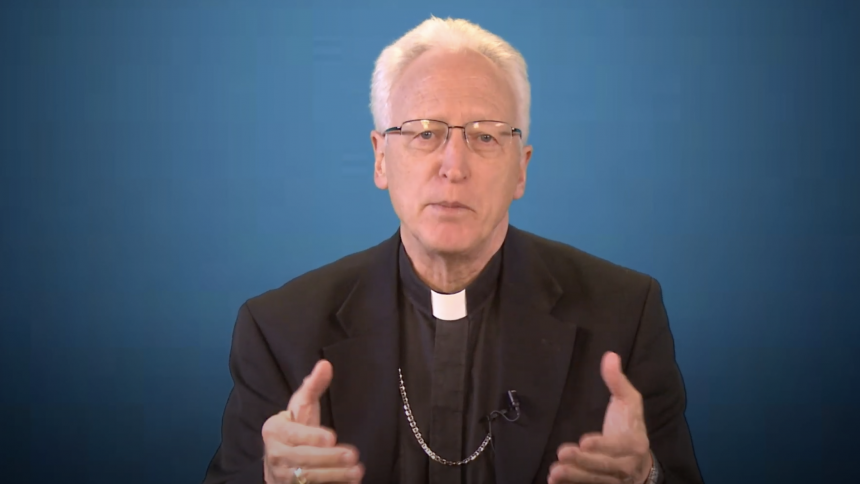
Beginning in Advent 2020, Bishop Earl Boyea of Lansing is leading people on a day-by-day journey through the Holy Bible. To subscribe go to Bishop's Year of the Bible at https://www.dioceseoflansing.org/byob
Today, January 11, the Bishop's Year of the Bible begins reading Saint Paul's First Letter to the Church in Corinth., Why has Bishop Boyea chosen this book as the next in his Year of the Bible reading list? Here is his explanation:
"Hello, I am Bishop Earl Boyea of the Diocese of Lansing. Between the Christmas Season and Lent we are in a period called “Ordinary Time.” That is why I am now asking us to read St. Paul’s First Letter to the Corinthians. He was dealing with some very ordinary problems in Corinth which may help us deal with similar problems today."
"Corinth was completely destroyed by the Romans in 146 BC but rebuilt by Julius Caesar 100 years later. This Roman city became an economic center with a population of about 100,000, many of whom may have been former soldiers. Paul spent a year and a half here including the year 51 AD. This came after his rather unsuccessful mission in Athens (you might read Acts of the Apostles, chapter eighteen, for more background)."
"Paul established this community. He saw himself as their father. But he was clear that the foundation was Jesus Christ and him crucified. It was what was being built upon that foundation which caused Paul concern. Having received information from Chloe’s household (1:11) and no doubt also from Stephanas (16:15), Paul wrote several letters from his mission in Ephesus, back in Asia Minor. This long letter was sent in late 53 AD or early 54 AD."
"Paul used this letter to address a number of very practical issues which were dividing the Corinthian Church. Perhaps, these divisions were a result of a lack of clarity on Paul’s part, or due to the later presence of Apollos or Peter in Corinth, or simply due to the enthusiasm of that young community. Whatever the cause, Paul called them back to Christ who desired that they be one."
"The issues covered are the role of wisdom, what it means to be an apostle, fornication, suing, marriage, virginity, food sacrificed to idols, the gatherings of the community, the Eucharist, charismatic gifts, the resurrection from the dead, and the collection for Jerusalem. In the midst of all this, Paul wrote chapter thirteen, used by many at their weddings, in which Paul lifts up love as the virtue which must guide us all if we are to be one community."
"Paul most likely returned to Corinth and, of course, we have another letter to that community, Second Corinthians. However, it is not clear that he was ever able to bring this rambunctious Church into a real communion. Pope Clement wrote a letter to Corinth around the year 100 AD and noted the continuation of divisions there."
"Divisions, or perhaps diversity, will always exist. Seeking the unity in Jesus is the only solution which Paul offers. As we read these sixteen chapters, starting on January 11th, let us seek Christ in these ordinary times."
